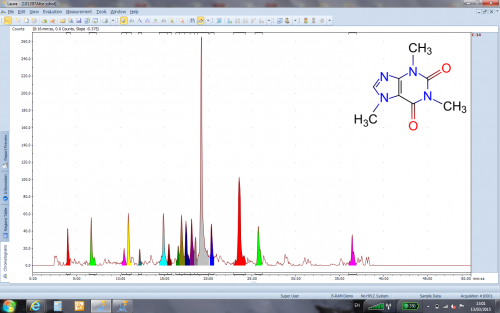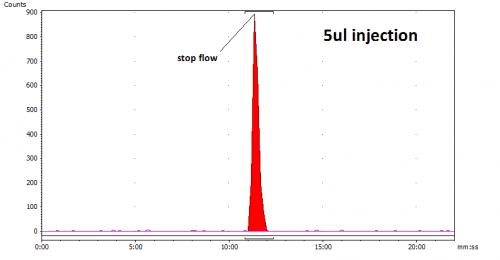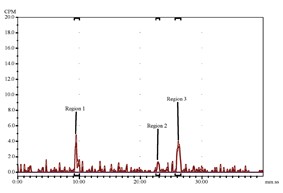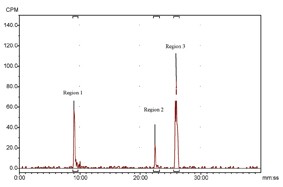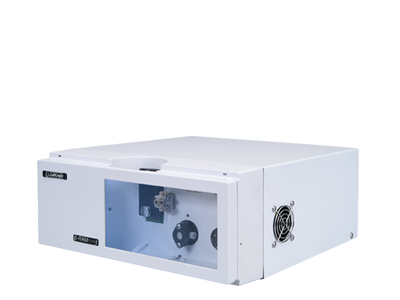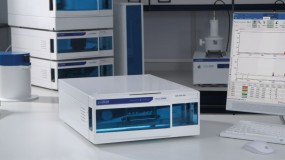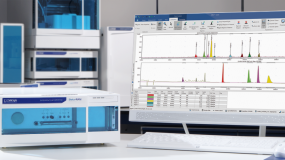The world's leading radio flow detector offers unrivaled sensitivity, resolution and versatility.
** A newer version of this instrument is available, please see the Beta-RAM 6 radio flow detector for HPLC. **
With over 30 years of development and used by thousands of researchers worldwide, the Beta-RAM coupled with the industry standard Laura software, leads the way for radiochromatographers.
Sensitivity
The Beta-RAM offers superb sensitivity with the speed and efficiency of on-line counting. Special functions such as Active Counting Mode and Stop Flow offer the users unrivaled levels of sensitivity and limits of detection.
Resolution
The B-RAM uses low dead volume fittings, tubing and mixing components to ensure the best possible resolution between peaks and to retain peak shape. Specially designed flow cells are also used to keep peak integrity. The B-RAM also supports the latest LC techniques such as UPLC, Fast LC, Rapid resolution LC.
Versatility
The B-RAM range offers the versatility of either homogeneous counting by admixing with liquid scintillator via the accurate built in pump or heterogeneous counting with a range of pre-packed solid scintillator flow cells. This makes the B-RAM the versatile choice whether you are doing the most sensitive low level metabolism work or high activity preperative HPLC work.
Beta-RAM Radio Flow Detector for HPLC testimonials
Understand why the Beta-RAM is the world’s leading radio flow detector for HPLC by hearing from some of our customers.
Contract research organisation, USA
The experienced user described how when comparing the Beta-RAM 6 to the Perkin Elmer FSA, the Beta-RAM 6 is the clear winner. Read in more detail here.
BASF, USA
The German chemistry giant chose the Beta-RAM 5 radio detector to be used at the BASF Agricultural Products Division at Research Triangle Park, North Carolina. Senior Research Associate, Dr Huns Nejad, explains in more details here.
University of Manchester, UK
The university chose the Beta-RAM for the study of phosphoinositides, a family of phospholipids that regulate many cellular processes. Dr David R Jones, an associate scientist in the Institute’s Inositide Laboratory, explains the work in more detail here.
Documents
Application Notes
"The Disposition of Gemifloxacin, a New Fluoroquinolone Antibiotic, in Rats and Dogs "
J. V. Ramji, N. E. Austin, G. W. Boyle, M. H. Chalker, G. Duncan, A. J. Fairless, F. J. Hollis, D. F. McDonnell, T. J. Musick, and P. C. Shardlow. The American Society for Pharmacology and Experimental Therapeutics, Vol. 29, Issue 4, Part 1, 435-442, April 2001.
"Disposition and Metabolism of 2-(2"(1",3"-Dioxolan-2-Yl)-2-Methyl-4-(2'-Oxopyrrolidin-l -Yl)-6-Nitro-2h-l-Benzopyran(skp-450) in Rats"
Baek, Minsun, Chung. Hak Soon, Kim, Yunje, and Kim, Dong-Hyun. Drug Metabolism and Disposition Vol. 27. pp. 510-516.
"LC-MS/MS Characterization and comparison of metabolites formed from structural analogs. Cl-ABC, PD 123, and PD 456"
Egnash, Laura A., Lapham, Kimberly, and Ramanathan, Ragu, Pfizer Global. Research and Development, 2001.
"Sequential Injection Separation System with Stopped-Flow Radiometric Detection for Automated Analysis of 99Te in Nuclear Waste"
Egorov,Oleg, O'Hara, Matthew J., Ruzicka, Jaromir and Grate, Jay W.,, Analytical Chemistry. March 1, 1998, Vol. 70, No. 5, pp. 977-984.
"An efficient Synthesis of Carbon-14 Labelled Vigabatrin", Journal of Labelled Compounds and Radiopharmaceuticals"
Gill, Harpal S.,, VOL XXXVI. No. 5. 1994, pp. 425-430.
"Anaerobic Bioremediation of Benzene under Sulfate-Reducing Conditions in a Petroleum-Contaminated Aquifer"
Lovely. Derek R. and Anderson, Robert T., Environmental Science & Technology, 2000, Vol. 34, pp. 2261-2266.
"Basic Guide to the Mechanisms of Antiestrogen Action", Pharmacological Reviews"
MacGregor, Jennifer I., and Jordan, V.Craig , 1998, Vol. 50, pp. 151-196.
"Synthesis of Paclitaxel-C3'-14C". Journal of Labelled Compounds and Radiopharmaceuticals"
Walker. Donald G., Standridge, Robert T., and Swigor, John E., , 1994, Vol. XXXVI, No. 5, pp. 479-492.
"Beta -Particle Detection in HPLC by Flow-Through Monitoring vs. Liquid Scintillation Counting". Journal of Liquid Chromatography"
Rapkin. Edward, , 1993, 16(8), pp. 1769-1781.
"A Rapid Method for Determination of Beta-Emitting Radionuclides in Aqueous Samples"
Reboul, Scott H., and Fjeld, Robert A. , Radioactivity and Radiochemistry. 1994, Vol. 5, No. 3, pp. 42 - 49.
"Potential Effects of Surface Water Components on Actinide Determinations Conducted by Ion Chromatography"
Reboul, Scott H., and Fjeld, Robert A., Health Physics, April 1995, Vol. 68, No. 4, pp. 585-589.

